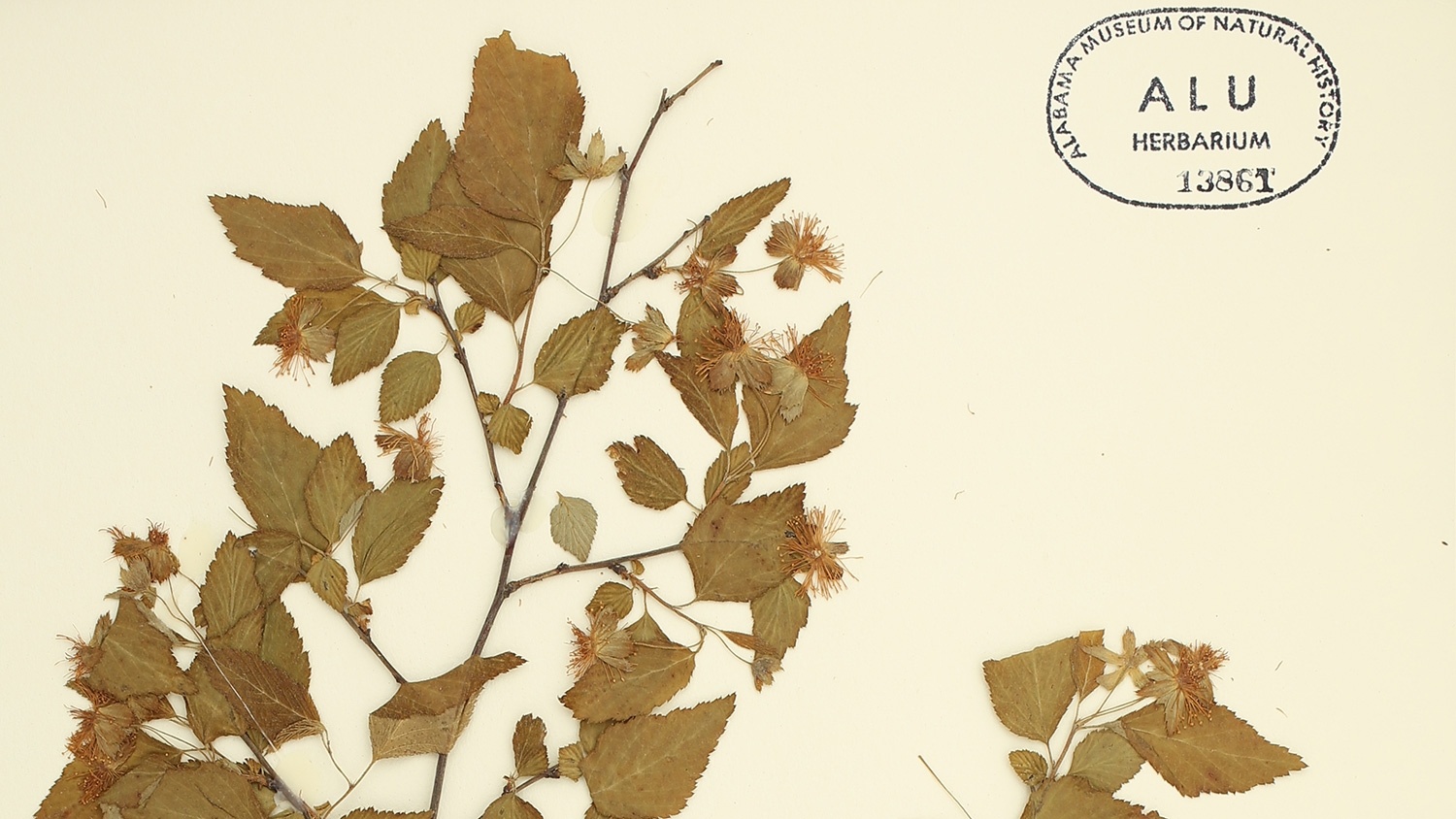Specimens
The University of Alabama Herbarium (UNA), the herbarium of the Department of Biological Sciences, houses about 68,603 specimens of vascular plants, about 6,000 specimens of mosses, about 650 specimens of liverworts, 2,373 specimens of marine algae, about 800 specimens of lichens, and about 1,300 specimens of fungi. These include The Mohr Herbarium (formerly ALU) ca. 4500 specimens on permanent loan from the Alabama Museum of Natural History.
The herbarium is particularly rich in plants from Alabama and aquatic vascular plants of the Western Hemisphere. It contains representatives of approximately 95% of the vascular species that occur naturally within the State and probably 99% of the naturally occurring moss species. Areas of particular richness in aquatic vascular plants include the Alismatidae, the Nymphaeales, and the Pontederiaceae. In addition, we have extensive collections of Gesneriaceae, Croton and Nyssa.
Organization
Vascular plant specimens are mounted to 100% cotton mounting paper. The plants are attached by strips of plastic glue or, more recently, acid-free JADE PVA adhesive spread of lower side.
Vascular plant species are filed in heavyweight “genus folders.” Bryophytes are placed inside standard sized packets folded from whole sheets of 8.5 x 11 inch 100% cotton bond paper.
We have chosen to arrange the families in a “phylogenetic” system rather than alphabetically. We have done so as a teaching tool. Students learn to recognize groups of families when the families are arranged so that related families are close together. Angiosperms are arranged according to the Cronquist system, cycads follow the sequence of Stevenson, the remainder of gymnosperms follow the sequence in das Pflanzenfamilien, and the pteridophytes are arranged according to Crabbe, Jermy, and Mickel.
Vascular plant genera are arranged alphabetically within the family. Species are separated geographically into folders with Alabama specimens, folders with North American specimens other than those from Alabama, folders with Latin American specimens, and folders with specimens from outside the Western Hemisphere. Within a genus, species are first separated geographically and then arranged alphabetically within each geographical area.
A barcode is attached to every sheet and packet. The barcode is an 11-character code, the first three characters are letters UNA, our acronym, and the last eight characters are numerals.
A serious problem any herbarium manager faces is the control of insect pests. Tobacco beetles can destroy a herbarium collection in a relatively short time period. To prevent insect infestations, all specimens are frozen at about -10°F for three days prior to being taken into the collection room. Any sheet removed from the collection room is again frozen before it is returned to the collection, regardless of how short or long a period it was outside of the room.
Collectors
Important collectors include:
- James R. Allison
- Michelle Birk
- Frank D. Bowers
- Rebecca Deramus Bray
- Carol Johnson Brooks
- Robert Burckhalter
- Ralph L. & O. D. Chermock
- John L. Clark
- Lloyd C. Crawford
- Alvin R. Diamond
- Larry J. Davenport
- C. Baker & F. S. Earle
- Scott C. Gunn
- Roland M. Harper
- A. M. Harvill
- Jr., Robert R. Haynes
- Fred K. Hoener
- Charles N. Horn
- Brian R. Keener
- Robert Kral
- David L. Lentz
- John R. MacDonald
- Sherrie E. Maginness
- Sidney T. McDaniel
- Russell Meigs
- Charles Mohr
- Helen Naugle
- Norris H. Williams
- Thomas M. Peters
- Al Schotz
- Richard W. Simmers, Jr.
- Eugene A. Smith
- Dan D. Spaulding
- Joab L. Thomas
- Jesse S. White
- John H. Wiersema
